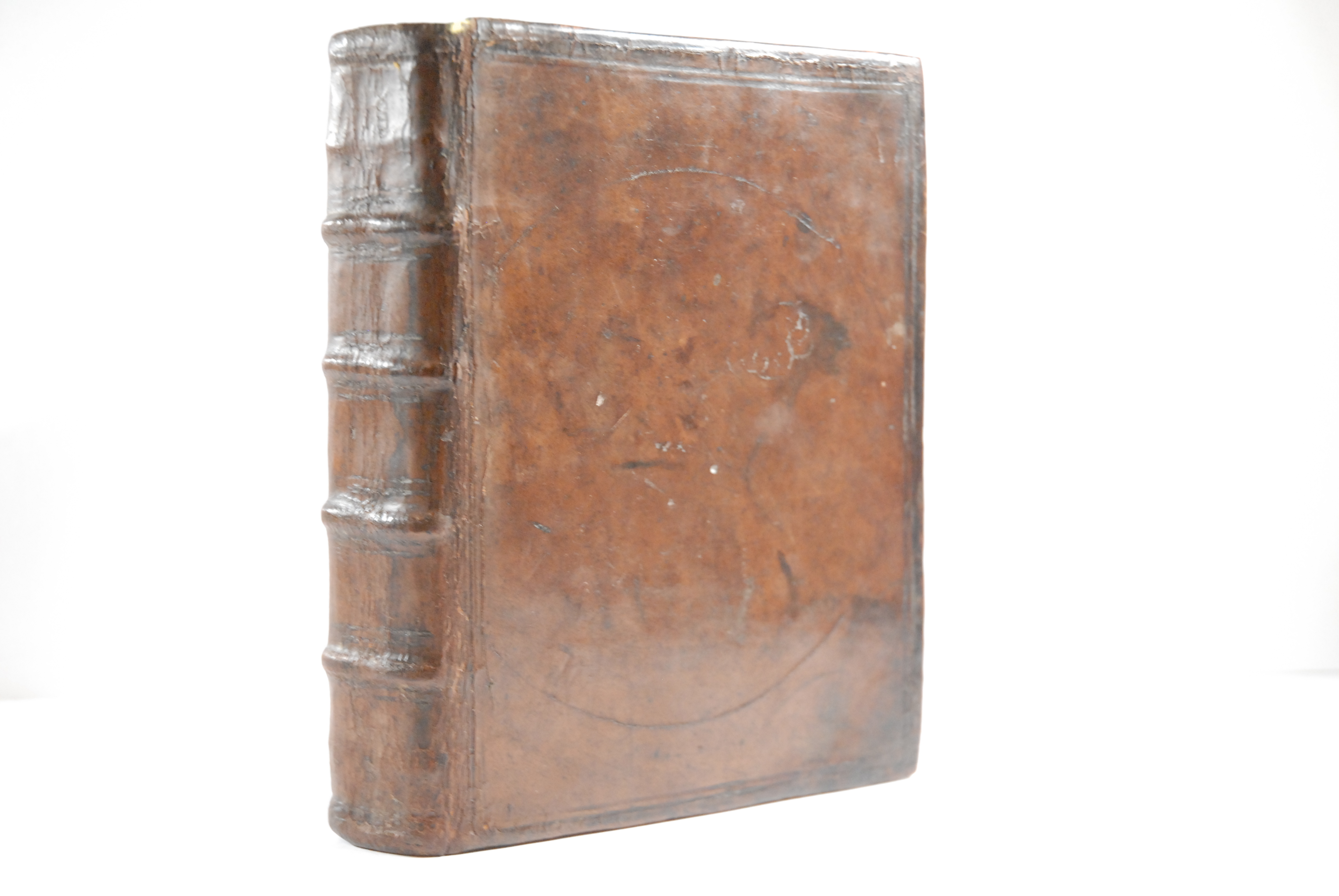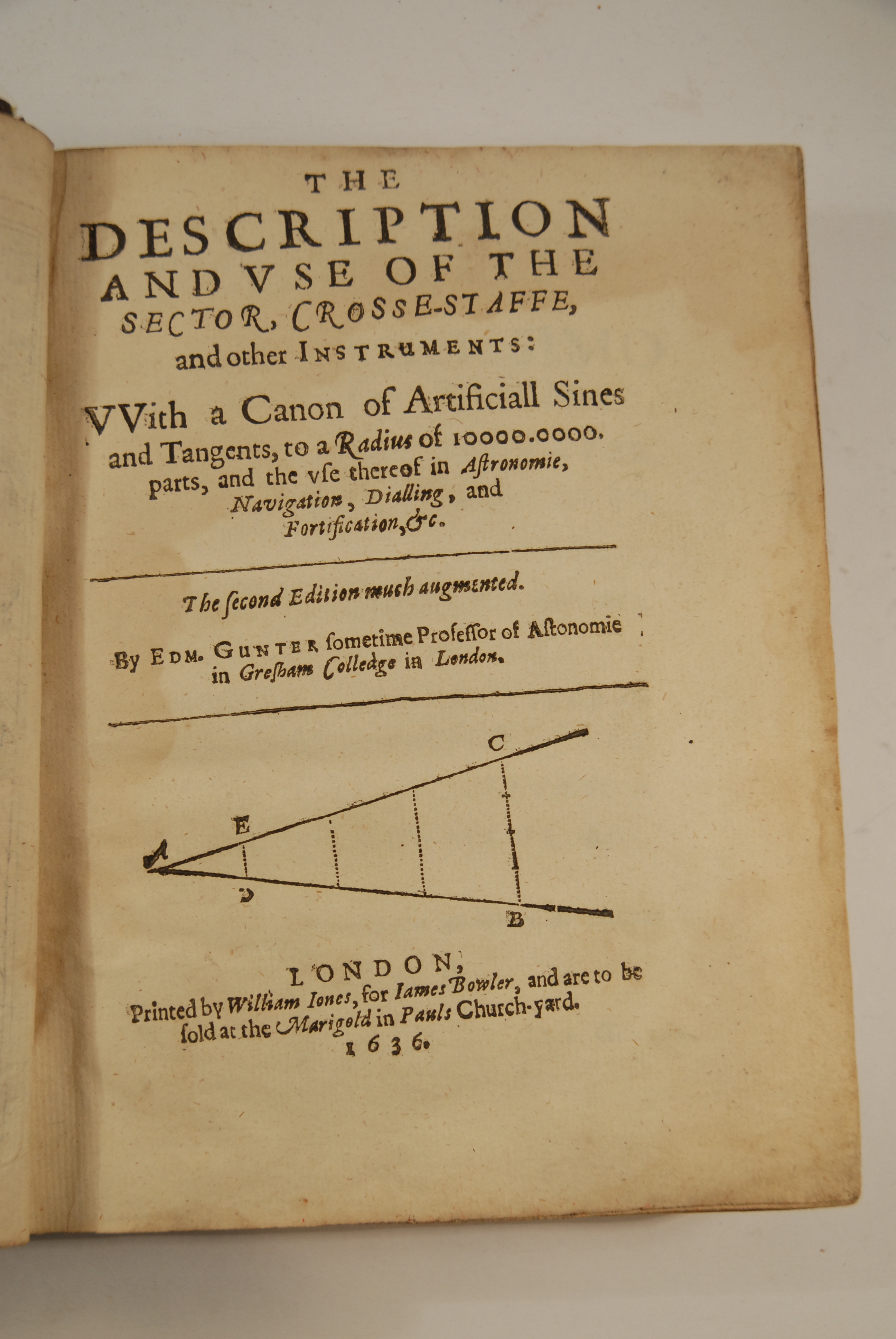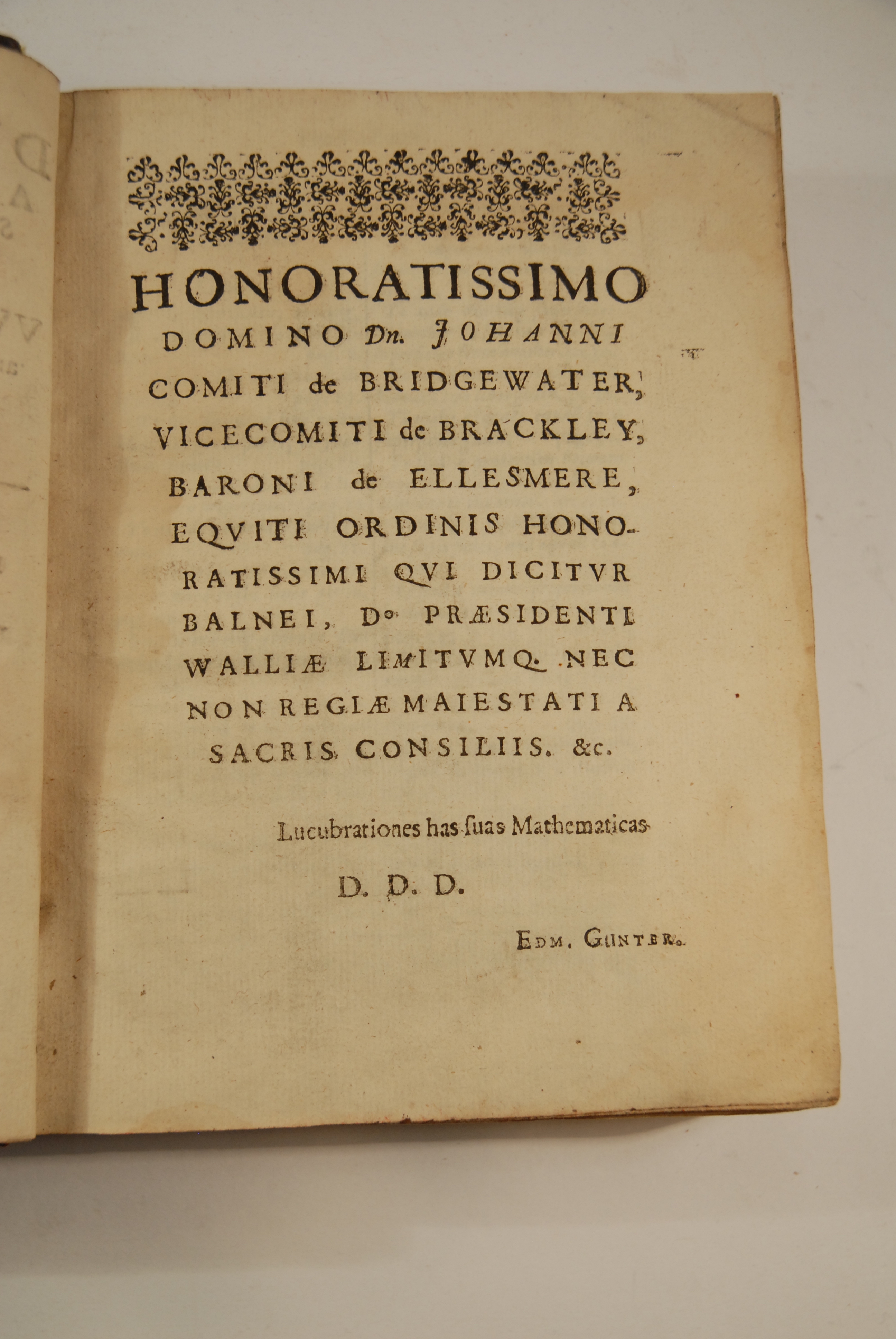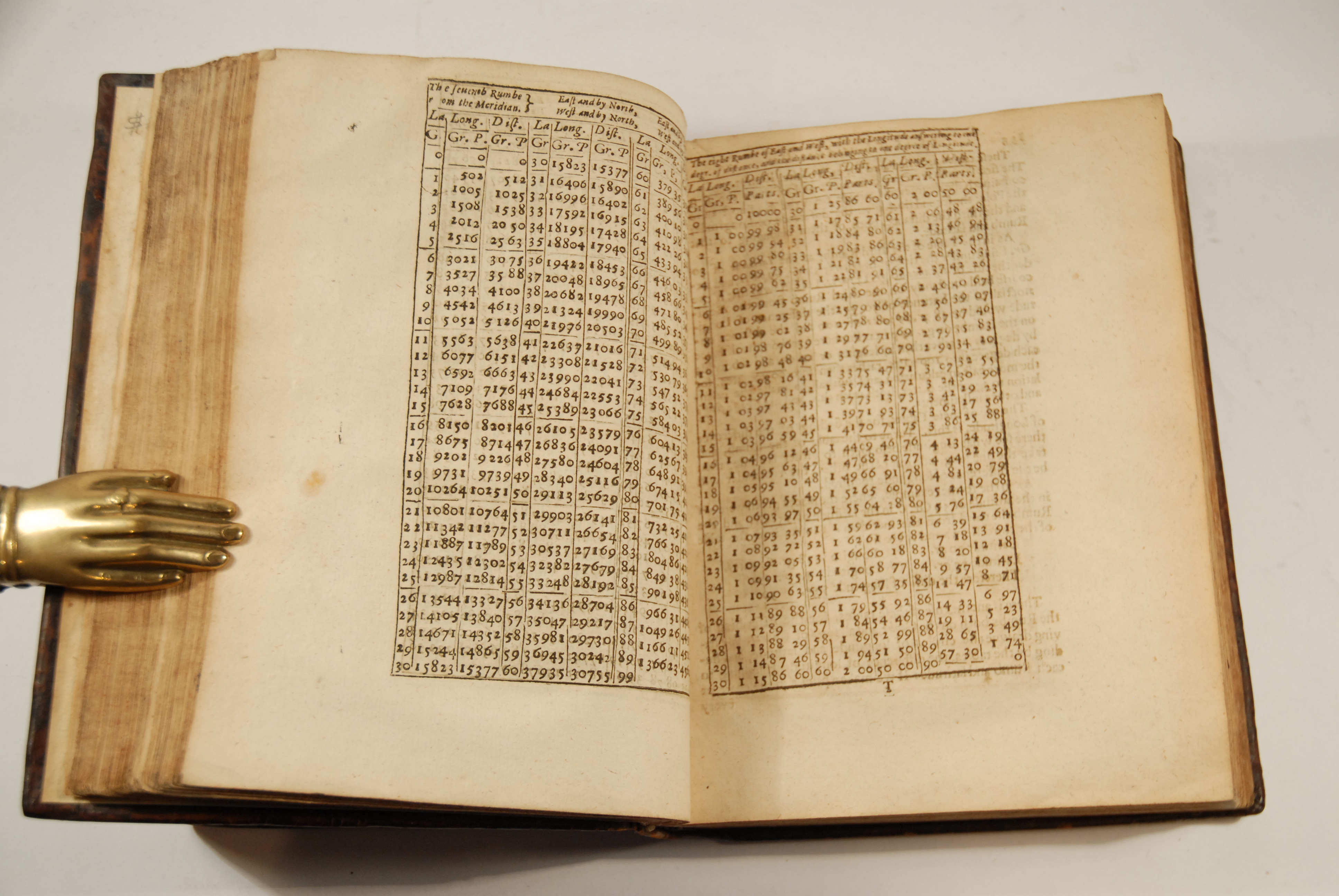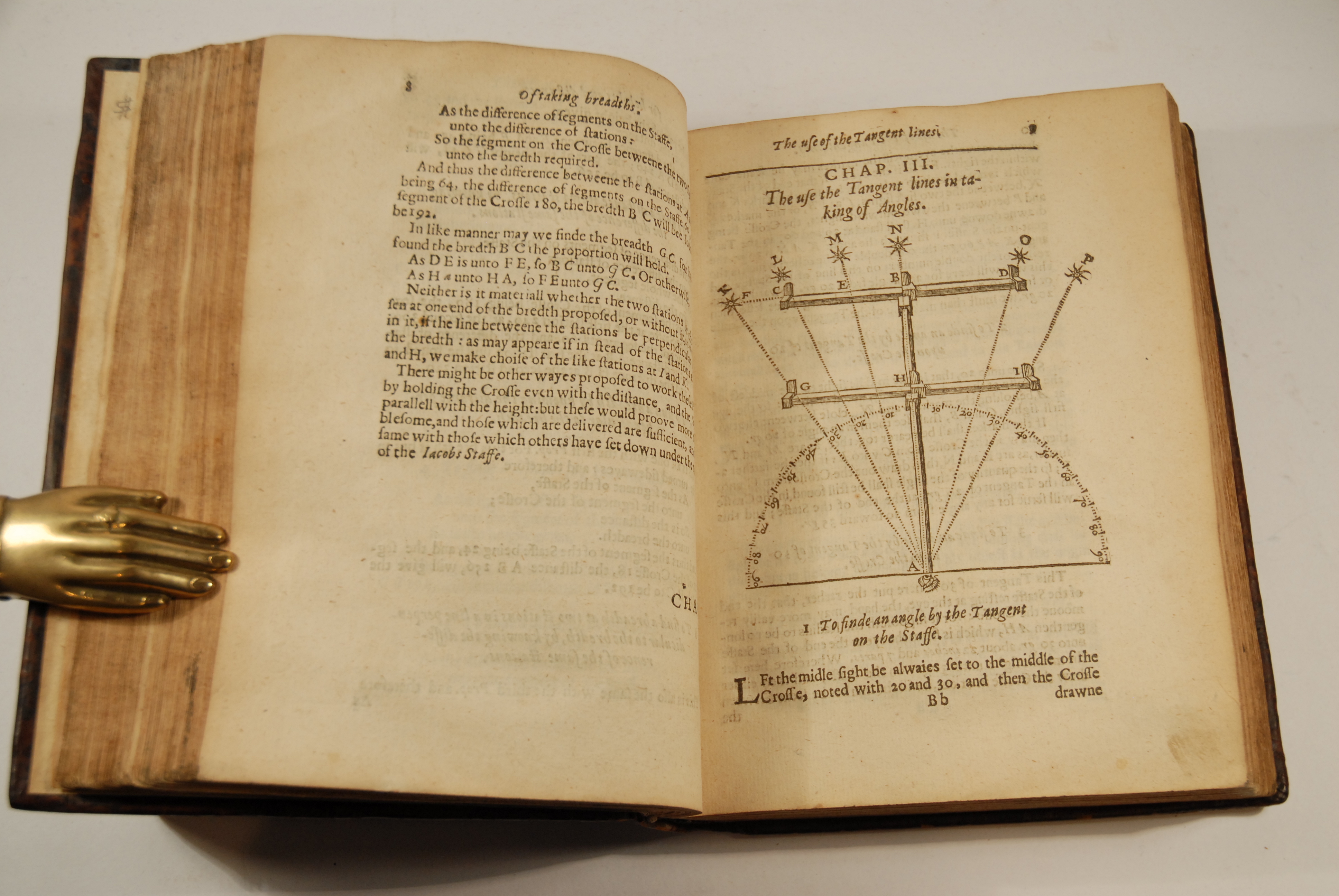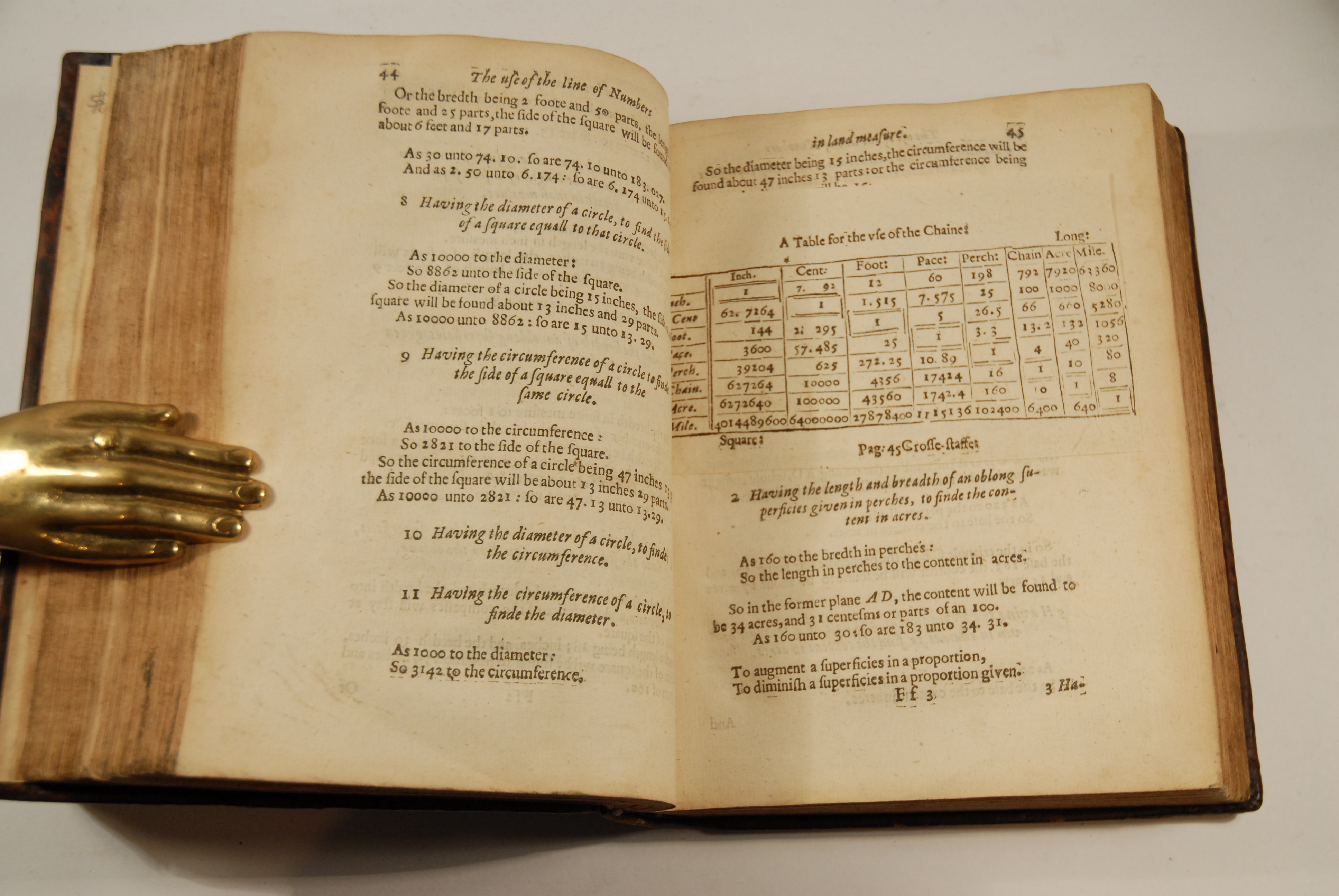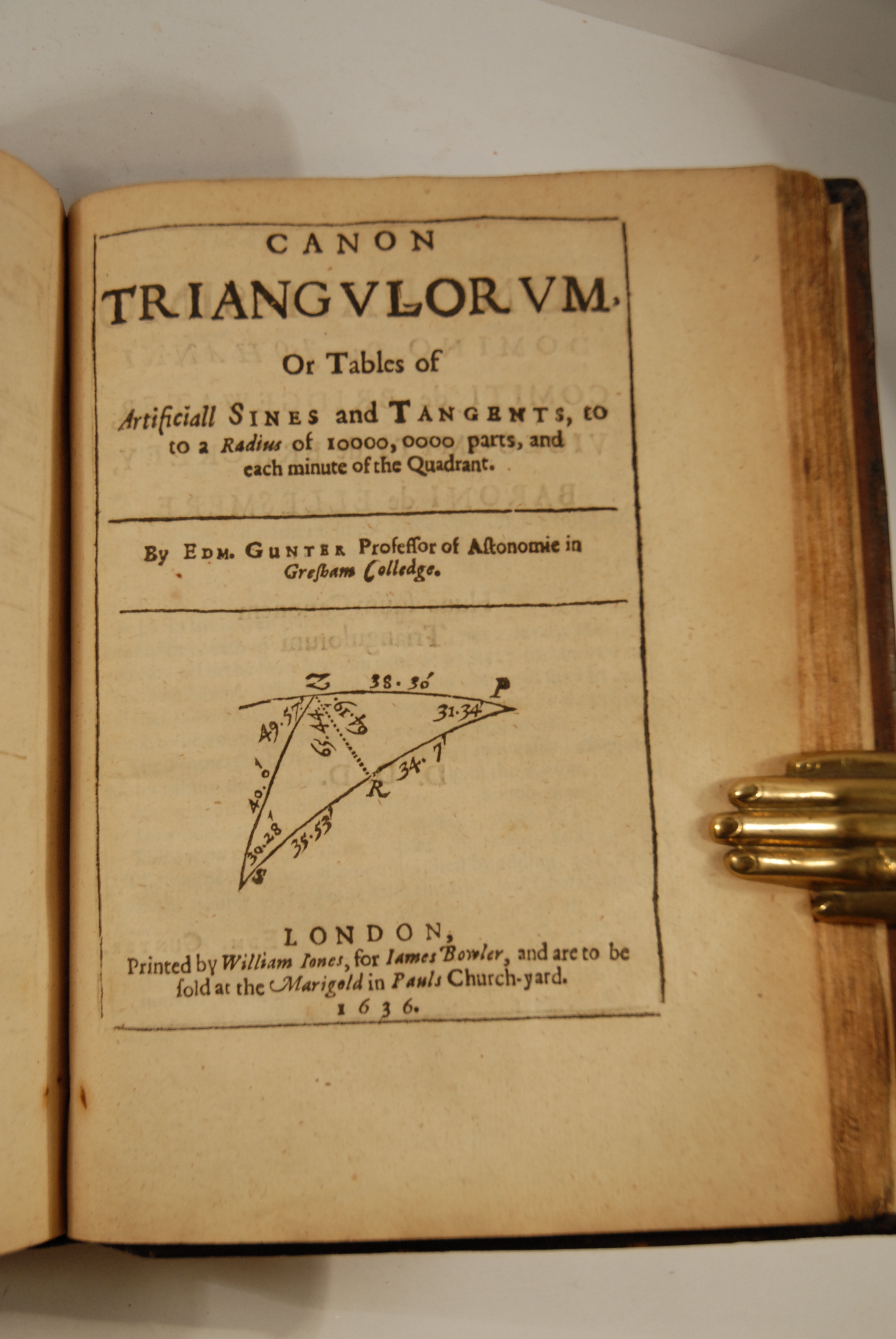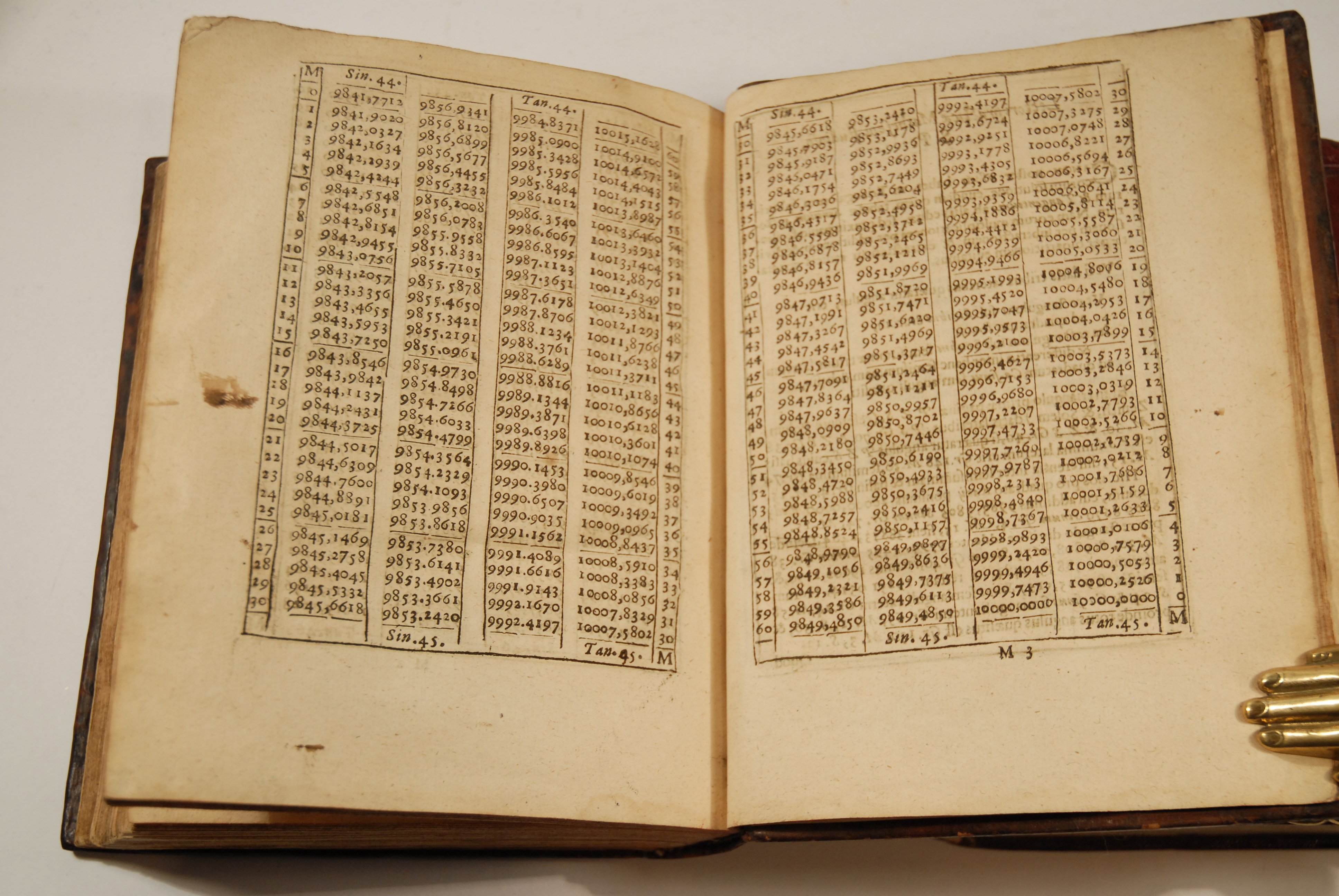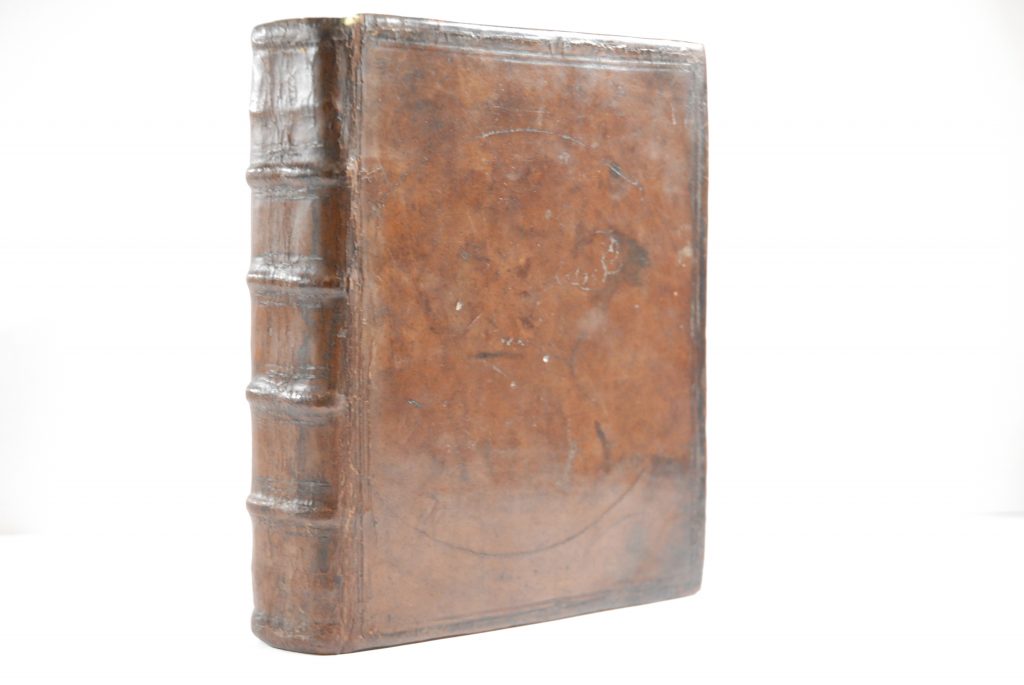GUNTER, Edmund
The description and vse of the sector, crosse-staffe, and other instruments: vvith a canon of artificiall sines and tangents
London, Printed by William Iones, for Iames Bowler, 1636£7,500.00
FIRST EDITION thus. Four parts in one volume. 4to. pp. [xvi], 80, [ii], 79-113, 116-163, [i]; 266, [ii]; [ii] 56, 59-64, 67-75, [i]; [cxii]. pi², b , B-K , L (±L4), M-X , Y²; 2A-3K , 3L²; [chi1] 4A-4I ; A-O . With additional engraved title page, 3L2 blank, the volvelle, p. 72 bound as issued [ie. uncut and not yet placed] between fols. K4 and L1, frontispiece, engraved plate, slip with woodcut table between 2F2 and 2F3, innumerable woodcut diagrams in the text, L4 a cancel, inserted leaf “The use of the Canon” between 3L2 and 3A1, engraved plate of Gunter’s sector as frontispiece, contemporary exlibris overwritten on recto “cost 6sii”, a few marginal annotations, book plate of the Fox Pointe collection on fly. Light age yellowing, occasional minor damp-staining in places, verso of last a little dusty, the rare marginal mark or spot. A fine copy, crisp and clean in contemporary calf, covers bordered with a double blind rule, spine with raised bands double blind ruled in compartments.
A fine copy, remarkably complete with all parts as issued, including the volvelle in an uncut state, of this important scientific work, in a contemporary binding. This is effectively the first edition of the collected works of Gunter. “Gunter was a firm advocate of the use of instruments in mathematics for easing the work of various mathematical practitioners, notably surveyors and navigators. His instruments were designed with these aims in mind. In particular his work on logarithms, their applications to trigonometry, and their inclusion on instruments greatly simplified the processes of mathematical calculation. His books were popular for many years after his death: an edition of all his works was produced by Samuel Foster in 1636 and this had three more editions, the last in 1680 .” DNB. “Gunter’s works, written in English, reflected the practical nature of his teaching and linked the more scholarly work of his time with everyday needs; the tools he provided were of immense value long afterward.” DSB. As an undergraduate, Gunter developed a strong interest in mathematics and in mathematical instruments. He wrote a manuscript ‘New Projection of the Sphere’ in his final year and this brought him to the attention of a number of leading mathematicians of the time including Henry Briggs.
Gunter published seven figure tables of logarithms of sines and tangents in 1620; an English translation was published in the same year. Although the words sine and tangent were already in use, Gunter invented the words cosine and cotangent. This was the first ever publication of logarithms of trigonometric functions and Gunter deserves much credit for this innovation. He also made a mechanical device, Gunter’s rule, to multiply numbers based on the logs using a single scale and a pair of dividers. It was called the ‘gunter’ by seamen and was an important step in the development of the slide rule. Gunter published his description in 1623 in the ‘Description and Use of the Sector, the Crosse-staffe and other Instruments’.“This book must be reckoned, by every standard, to be the most important work on the science of navigation to be published in the seventeenth century. It opened the whole subject of mathematical application to navigation and nautical astronomy to every mariner who was sufficiently interested in devoting time to the perfecting of his art.” C H Cotter, ‘Edmund Gunter (1581-1626), Journal of Navigation’.
“What Briggs did for logarithms of numbers, Gunter did for logarithms of trigonometrical functions. In fact, he introduced the terms cosine, cotangent and cosectant for the sine, tangent and secant of complementary angles. Gunter’s most important book was his Description and use of the Sector. .. A sector is a mathematical instrument which consists of two hinged rulers on which there are engraved scales. The scales allow various questions in trigonometry to be resolved by using the property that two similar(equiangular) triangles have sides in a constant ratio. The issue of who first invented by the sector is not without controversy. … What singles out Gunter’s sector is that it is the first mathematical instrument to be inscribed with a logarithmic scale to facilitate the resolution of numerical problems. This is not a slide rule in any sense of the term; the single logarithmic scale is used in conjunction with a pair of compasses. Such a rule is frequently referred to as a Gunter line. A two foot long boxwood ruler inscribed with a variety of scales was a standard navigator’s tool up until the end of the nineteenth century.”” C J Sangwin; Edmund Gunter and the Sector. ; The English Experience. Isaac Newton owned a copy of this 1636 edn. purchased for 5 shillings in 1667 now in the library of Trinity College, Cambridge.
A fine copy of this most important work.
In stock


